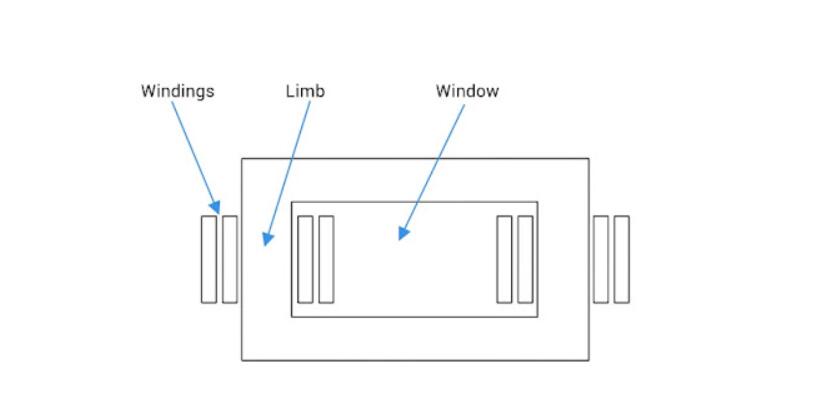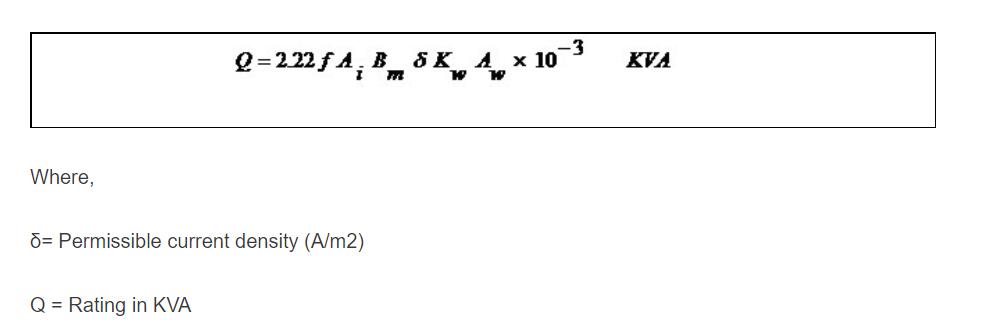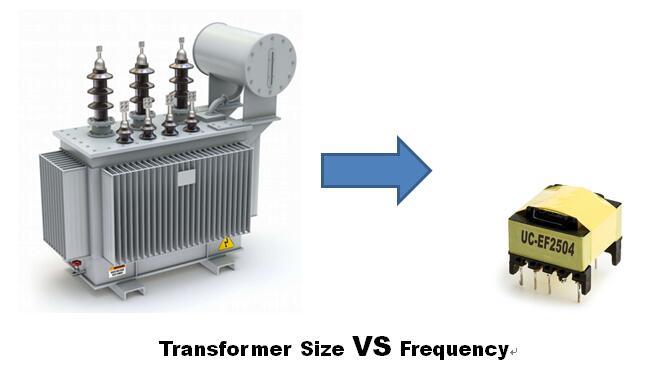Why as frequency increases the size of transformer decreases?
The area of the window and the cross-sectional area of the bracket are the main dimensions of the transformer, whose product is proportional to its size and weight.In general, the larger the product, the larger and heavier the transformer will be.
During the design of a transformer, an equation called the transformer output equation is used as a starting point. A transformer’s KVA rating and its size are determined by this formula:

Transformers with iron cores have the following output equation:


Window space factor is defined as the ratio of the copper conductor cross-sectional area to the window area.

The transformer core material determines the magnetic flux density in the output equation; Depending on the cooling method, the current density varies; It is a constant that determines window space. The KVA rating is proportional to the product of frequency, window area, and limb cross-sectional area. The KVA rating is therefore proportional to the product of frequency and transformer size. Increasing the frequency decreases the product of window area and limb cross-sectional area for a given transformer rating; As a result, the size of the transformer core and the amount of iron required for it are reduced. As frequency increases, transformers become lighter and smaller.
What factors will determine the size of a transformer?
- Frequency
- Area of the core
- Flux density of the core material
As the frequency increases for a given transformer rating, the window area and cross sectional area of the limb decrease; Thus, the amount of iron required for the core decreases. Due to this, as the frequency increases, the transformer becomes lighter and smaller.
What happen if frequency increase?
There is an increase in secondary voltage or EMF if the frequency increases. As the supply frequency decreases, the secondary voltage decreases.Transformer size is inversely proportional to frequency. Transformer size decreases as frequency increases.



